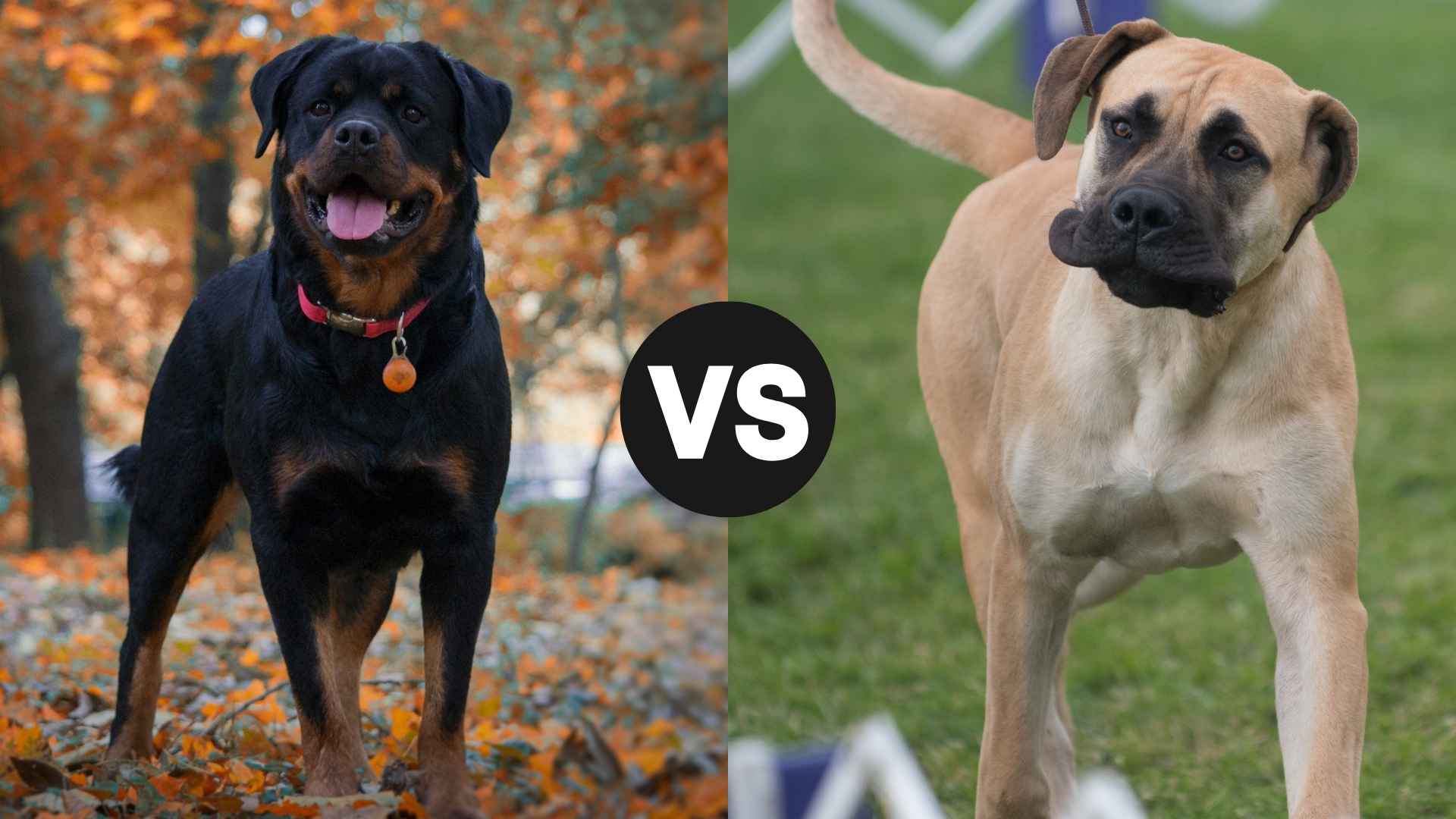Let’s face it—there’s something deeply majestic about big dogs.
At first glance, both breeds give off serious bodyguard vibes. But dig a little deeper, and you’ll find they’re more than just muscle—they’re full of heart, history, and personality. One’s a sleek, driven working dog with a brain as big as his bark. The other? A drooly, couch-loving, gentle giant who moves at his own (very slow) pace.
Choosing between a Rottie and a Mastiff isn’t just a size game—it’s a lifestyle decision. From their energy levels to their grooming needs and everything in between, these breeds offer totally different versions of the “big, loyal dog” experience.
In this breakdown, we’re getting into the nitty-gritty of Rottweiler vs Mastiff living. You’ll get the scoop on their exercise needs, training quirks, coat care, health factors, and even how long you can expect to share your life (and couch) with each of them.
So, whether you’re looking for a gym partner with paws or a 150-pound cuddle bug, let’s find out which of these gentle giants is truly your vibe.
Rottweiler vs. Mastiff
Alright, let’s talk heritage. The Rottweiler is a German working breed with Roman roots, originally used to herd cattle and pull carts. Today, they’re best known as loyal guardians, quick learners, and confident companions with a protective streak. They’re the type to watch you make your coffee every morning like it’s a mission brief.
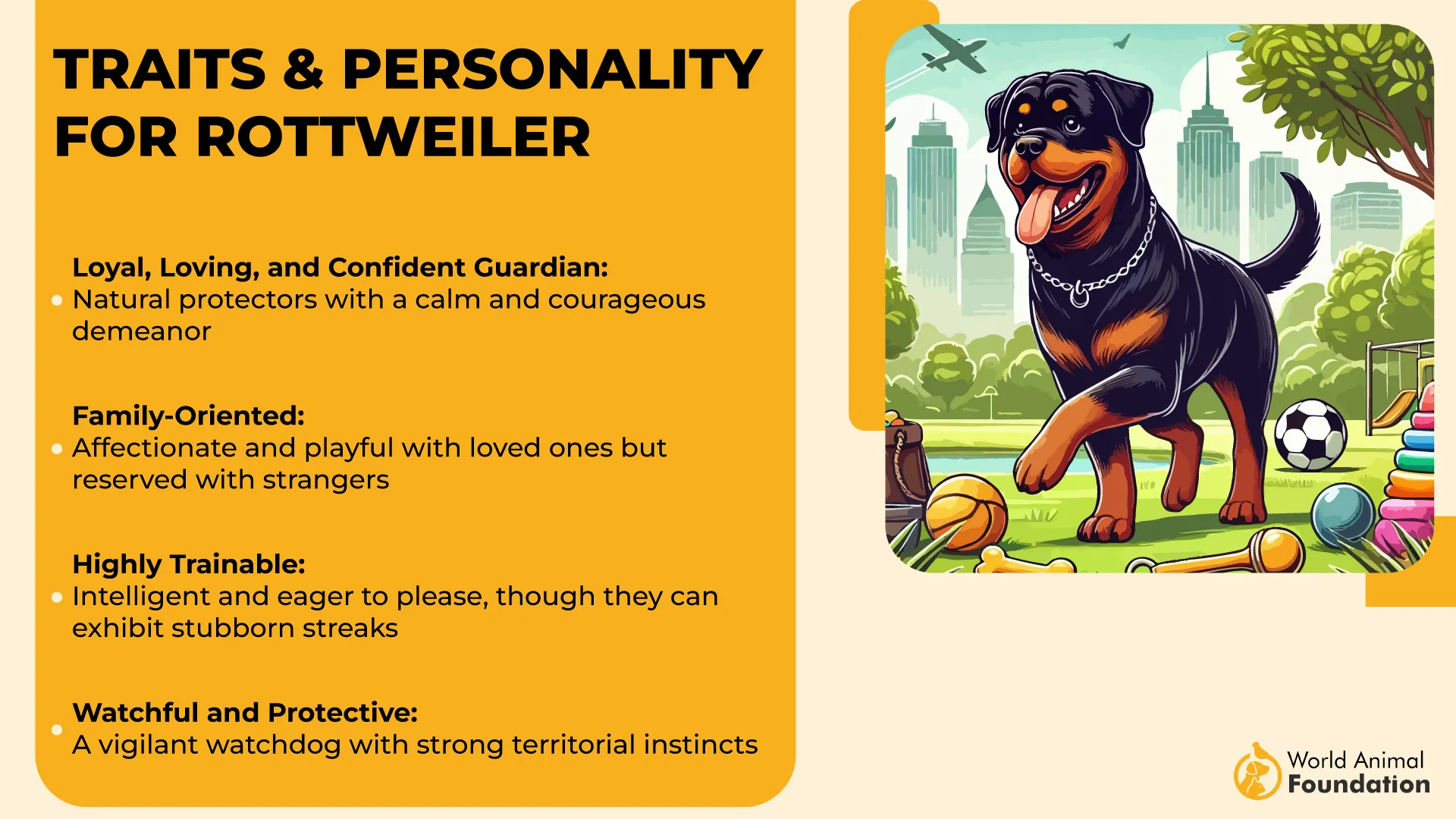
The Mastiff, on the other hand, is a literal throwback. Like, ancient Rome kind of throwback. With roots as war dogs and estate guardians, Mastiffs are one of the oldest known breeds. They’re massive, mellow, and famously chill—think wise old warrior with a soft heart.
Rottweilers are medium to large-sized powerhouses with athletic builds and high alertness. Mastiffs are straight-up massive, often weighing in over 150 pounds, and they exude calm, grounded energy.
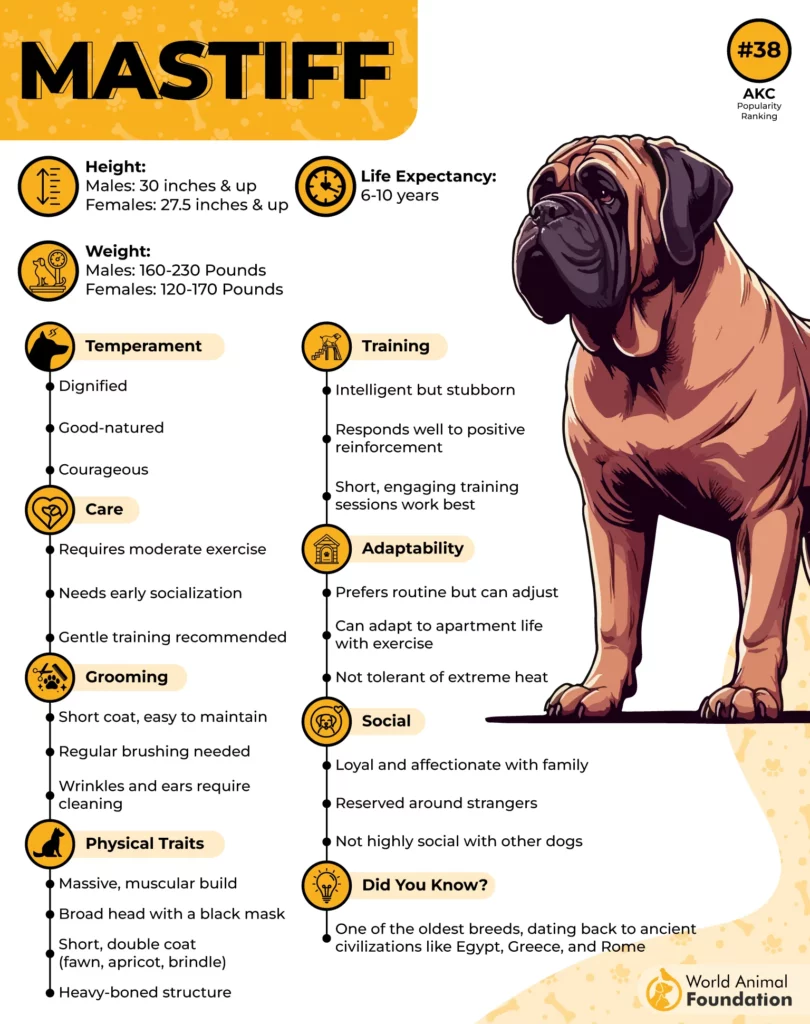
Temperament-wise, Rotties are active, sharp, and love a job. They bond deeply with their people and are known to be “velcro dogs” who need to be involved in everything. Mastiffs are equally loyal but more… zen. They’re content to watch the world from their spot on the rug and will protect you without saying a word.
If you’re into high drive, agility, and brainy bonding, the Rottie might be your soulmate. Prefer a quiet mountain of fur that lounges but still intimidates strangers? The Mastiff’s your guy.
Rottweiler vs. Mastiff: Activity Requirements
Rottweilers? Let’s just say they’re the CrossFit enthusiasts of the dog world. They have moderate to high energy levels and thrive on having something to do—fetch, obedience drills, scent work, you name it. They need moderate exercise.
Daily structured exercise is a must, or they’ll invent their own (and that rarely ends well for your furniture).
You’re looking at at least 60–90 minutes of daily activity, including both physical exercise and mental engagement. Walks, games, agility, even hiking—Rotties love a challenge and excel with active owners.
Mastiffs, in contrast, are… not that. These dogs have low energy levels and prefer short strolls to high-intensity anything. Think 30 minutes of walking, max, and you’re golden. They’re built for protection and companionship, not speed or endurance.
That said, Mastiffs still need consistent, low-impact movement to avoid joint issues and weight gain. Just don’t expect them to chase balls or climb trails—they’ll look at you like, “You must be joking.”
Rottweiler vs. Mastiff: Training and Socialization
Here’s where things get fun: Rottweilers are straight-A students—intelligent, focused, and eager to please, especially when they respect their trainer. But make no mistake: they need strong, confident leadership, or they’ll take the reins (and the couch).
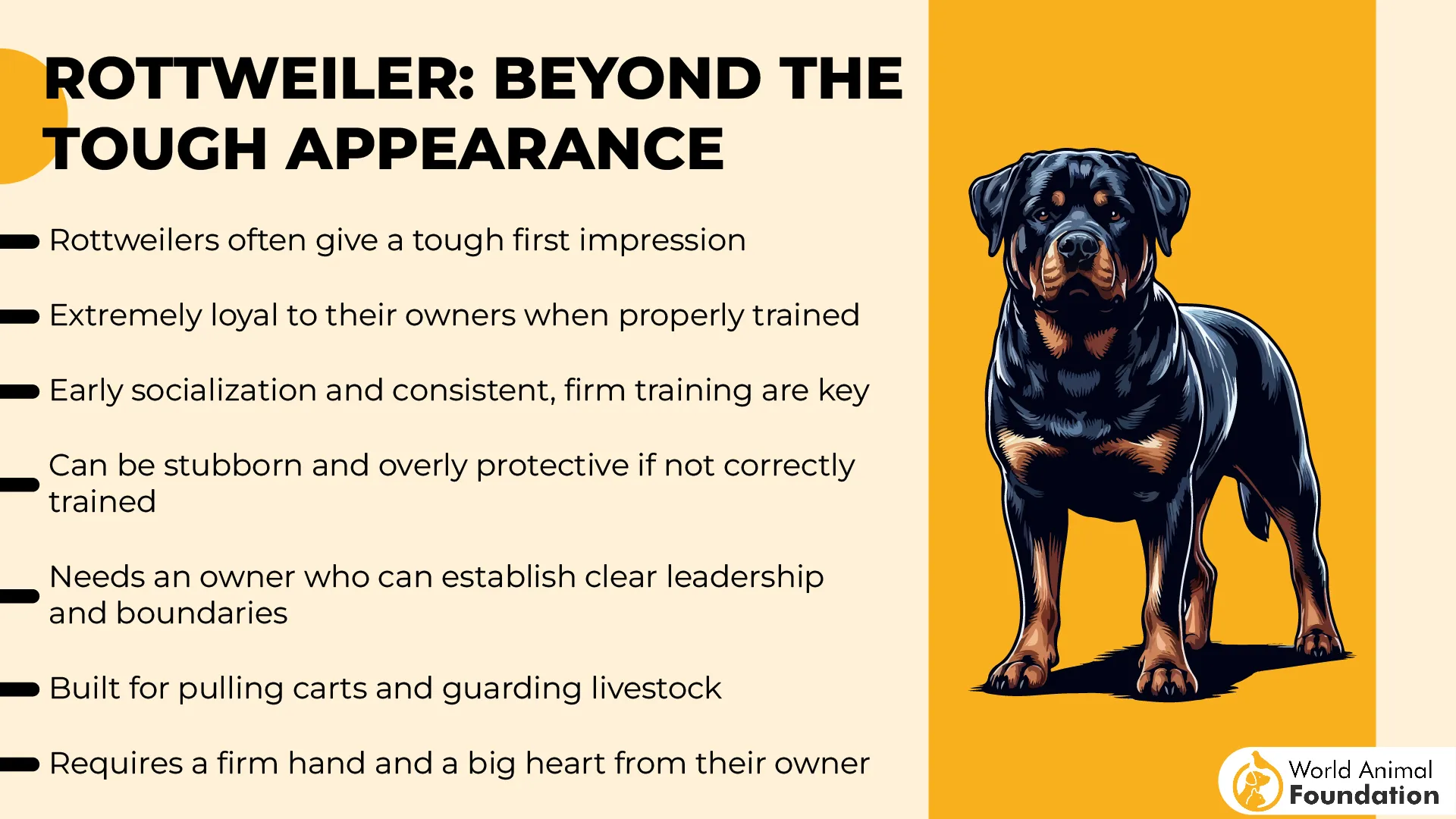
Training rottweilers is easy if you start early and stick to positive reinforcement. Rotties love structure, thrive on challenges, and do great in advanced obedience, protection work, and canine sports. They’re sensitive to your tone and thrive with clarity and consistency.
These are incredibly intelligent dogs, and they thrive when challenged mentally and physically. That also means they can get bored fast, and bored Rotties = mischief. Hence, they are more suitable for experienced dog owners.
Mastiffs? They’re more like the chill kid in the back of the class who listens when it matters. They’re independent thinkers, not easily impressed, and not fans of repetition. But they’re incredibly loyal and respond well to gentle, firm guidance.
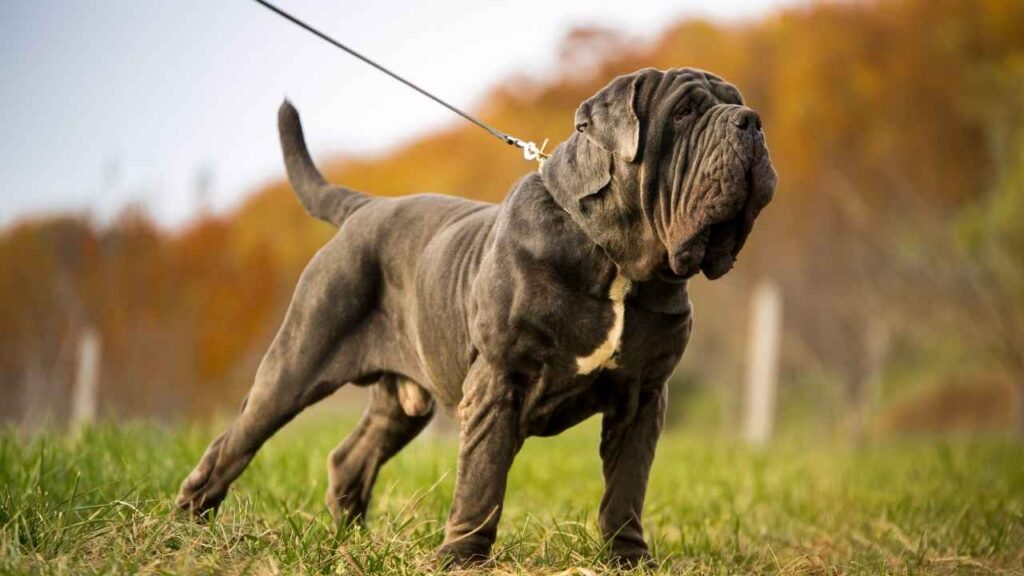
You’ll need patience and calm authority with a Mastiff. Harsh training methods? Total no-go. They need to trust you before they truly cooperate—and once they do, they’re deeply loyal and protective.
Socialization, along with consistent training, is key for both breeds, especially because of their guarding instincts. A poorly socialized Rottie or Mastiff can become overly wary or even aggressive. Early exposure to people, sounds, and other dogs is non-negotiable.
In short, properly trained and socialized Rotties are high-performance learners; Mastiffs are slow and steady students with big hearts. Pick your training tempo.
Rottweiler vs. Mastiff: Coat Care
Good news: neither of these large breeds requires fancy spa days or dramatic blowouts. But that doesn’t mean you can skip the brush entirely.
Rottweilers have a short, double coat that’s smooth and lays flat, as stated by PDSA. They shed year-round, with heavier shedding during seasonal changes (spring and fall). A quick weekly brushing with a rubber curry or bristle brush keeps their coat healthy and controls loose fur.
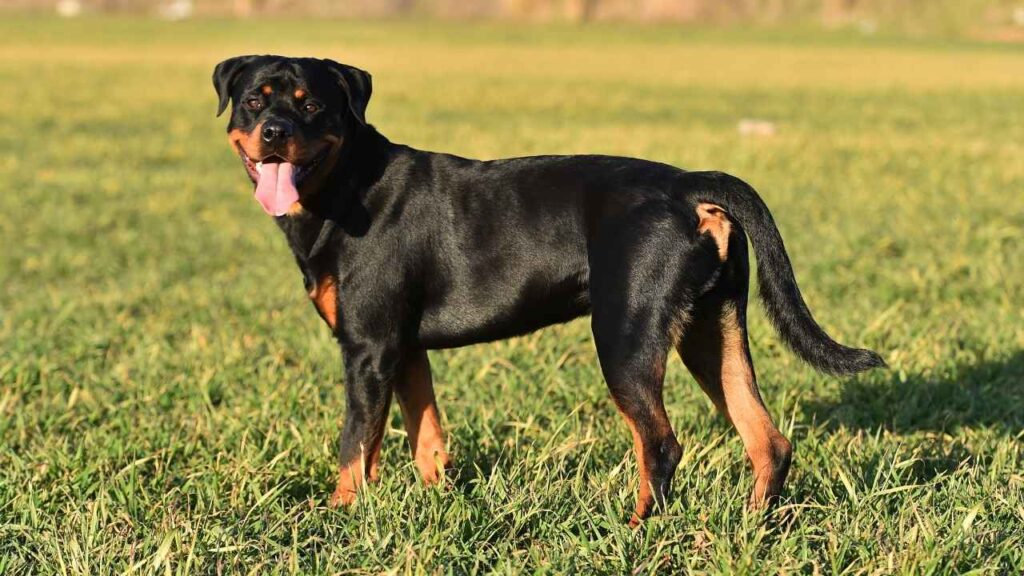
Rotties are generally low-odor dogs, and unless they’ve rolled in something suspicious (and they will), baths can be infrequent—every 6 to 8 weeks is usually fine. But don’t ignore ear checks and nail trims. Clean ears = fewer vet bills.
As AKC describes, Mastiffs also have a short coat, especially the English mastiff, but theirs is typically looser and more prone to oil buildup and drool-related messiness. And yes—they drool. A lot. Towels will become part of your home décor. Be prepared.
Mastiffs shed moderately, Britannica says, especially in warmer months. Weekly brushing with a soft slicker brush and regular face wipe-downs will go a long way in keeping them clean and cuddle-friendly.
Neither breed is high-maintenance, but if you’re not a fan of fur tumbleweeds or slingers (that’s what Mastiff drool is lovingly called), the Rottweiler may be the slightly cleaner choice.
Rottweiler vs. Mastiff: Health Considerations
Both breeds are large, and unfortunately, big dogs often come with big health risks. But knowing what to expect can help you keep them thriving longer.
Rottweilers are prone to hip and elbow dysplasia, certain cardiac issues, and osteosarcoma (bone cancer). They can also be sensitive to diet, so a well-balanced, breed-specific food is important. Exercise is essential, but don’t overdo it too young, or joint issues can develop faster.
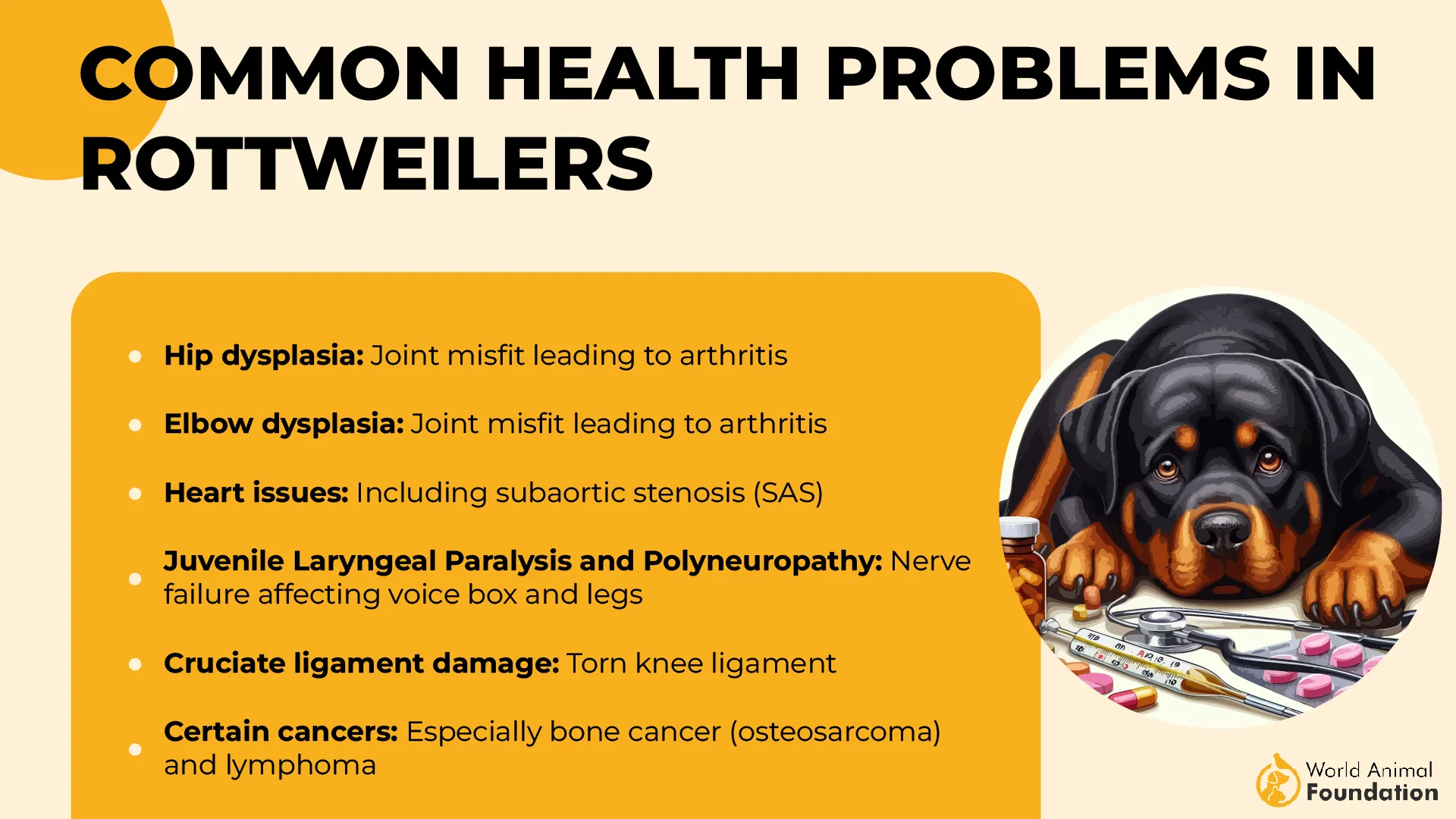
PetMD claims Mastiffs face many of the same problems—hip dysplasia, bloat (gastric torsion), entropion (eye condition), and cardiac concerns are big ones. Because of their sheer size, they also deal with joint stress earlier, so orthopedic beds, slow feeding, and joint supplements can make a huge difference.
Both breeds benefit from regular vet checkups, joint support, clean diets, and consistent, moderate exercise. Mastiffs, due to their slow growth and size, need careful management early on—too much activity too soon can be damaging.
Pro tip: get insurance before they turn 2. Giant breed health care can be expensive, and early preventative coverage is key.
Rottweiler vs. Mastiff: Life Expectancy
Here’s where things get a little emotional. Big dogs = shorter lifespans, and both of these breeds fall on the shorter end of the spectrum—but there’s still a lot of love (and slobber) packed into those years.
Pet Plan declares Rottweilers tend to live around 8–10 years, with some reaching 11 or 12 when raised with excellent care and genetics. Their strong bodies and high intelligence mean they stay active and engaged even into their senior years.
Mastiffs, on average, live 6–10 years, with some topping out around 8. Their size alone is a limiting factor—giant breeds age more quickly, and wear-and-tear on their joints and organs takes its toll faster than on smaller breeds.
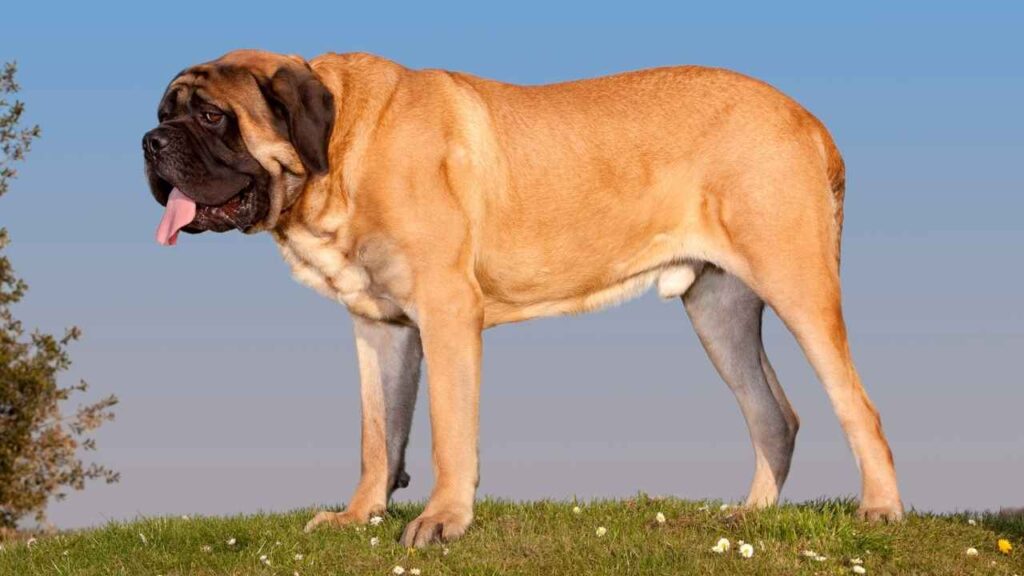
It’s important to see those years as packed with depth and loyalty, not just numbers. Both Rotties and Mastiffs bond deeply with their humans and leave an enormous (literally and emotionally) impact.
Want more time? Focus on early health screenings, proper weight management, high-quality food, and daily mental engagement. And of course—love them hard every day.
Conclusion
Choosing between a Rottweiler and a Mastiff dog breed isn’t just about picking a big dog—it’s about choosing a lifestyle, a vibe, and a new family member who’ll shape your daily rhythm.
Go with the Rottweiler if you’re looking for a smart, high-energy guardian who thrives on tasks, training, and being your ultra-loyal ride-or-die. They’ll push you to stay active, think ahead, and invest in the bond every single day.
Choose the Mastiff if you want a gentle giant who doesn’t need high maintenance but offers next-level loyalty and quiet companionship. They’re protective, affectionate, and happiest just being near you—even if that means squashing your feet with their nap position.
Both breeds are deeply loving, fiercely loyal, and unforgettable in their own right. The real question isn’t which is better—it’s which one fits your life, your energy, and your heart.


